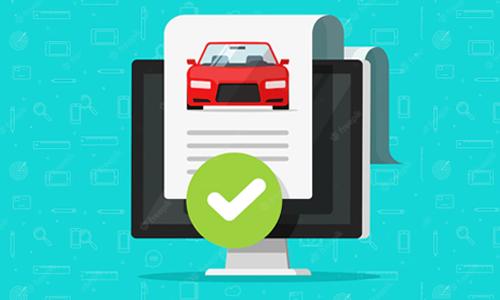In the fast-paced environment of the UAE, having comprehensive car insurance is essential for every vehicle owner. A comprehensive car insurance policy is an all-encompassing policy that financially protects you and your car from a wide array of potential risks such as theft, collisions, and third-party liabilities, among others.
As basic car insurance plans generally offer limited coverage, opting for additional add-ons can significantly enhance your policy, making it more robust and customised to complement your specific needs. One innovative add-on gaining popularity in the UAE is the ‘Pay As You Drive’ car insurance option. With the 'Pay As You Drive' add-on, you can save on your car insurance premiums while enjoying comprehensive vehicle coverage.
With this comprehensive guide, you will better understand the 'Pay As You Drive' concept and how it can complement your car insurance policy. This knowledge will help you make informed choices when selecting your insurance plan and add-ons, ultimately providing you with the best possible coverage for your vehicle at an affordable cost.
What is the Pay As You Drive Car Insurance Option?
The 'Pay As You Drive’ insurance option, also called pay-per-mile insurance, is an add-on option that calculates premiums based on how much and how well a person drives. The primary goal of this add-on is that the less someone drives, the lower the risk of an accident and, therefore, the lower the car insurance premium.
Generally, this insurance model uses telematics technology, which involves installing a small device called a ‘black box’ or using a smartphone application in the policyholder's car. Using the technology, the device tracks speeds, mileage, braking patterns, and the time of day the vehicle is driven. The concerned insurance company, accordingly, then uses the data and adjusts the car insurance premium accordingly.
Benefits of Pay As You Drive Car Insurance Option
Some of the notable advantages of ‘Pay As You Drive’ insurance are listed below –
- Annual Plan with Flexibility: Pay as you drive insurance is akin to a comprehensive plan, valid for one year in the UAE, with a one-month grace period for renewal. This allows you to maintain consistent coverage, similar to the comprehensive insurance plans.
- Premiums Based on Usage: Pay as you drive plans adjust your premiums according to your vehicle usage. For instance, if you drive less during a specific period, your premium will be lower during that time. This flexibility enables you to pay premiums only when you're actively using your car.
- Comprehensive Coverage at a Lower Cost: Despite offering lower premiums, pay as you drive insurance still provides comprehensive coverage similar to traditional plans. This means you get the same benefits and protection as a standard comprehensive policy but with the added advantage of potential cost savings.
- Ideal for Multi-Car Households: Pay as you drive insurance is particularly beneficial for households with multiple vehicles that aren't all used regularly. With the premium linked to all your cars, you'll only pay for insurance when each vehicle is in use, helping you save money.
- Customisable Coverage: One of the most significant advantages of pay as you drive car insurance is its customisability. As a policyholder, you can select various add-ons and adjust your coverage based on your driving habits and requirements, ensuring a tailored policy that meets your specific needs.
Who Should Buy Pay As You Drive Insurance Option?
Pay as you drive insurance is well-suited for individuals with calculated driving habits, as premiums and coverage benefits are determined by factors such as mileage, driving behaviour, and frequency of car usage.
Given below is the list of drivers who may benefit from pay as you drive insurance option -
- Occasional Drivers: If you don't use your car daily or only drive short distances, a pay as you drive insurance plan could be an ideal choice. With premiums based on your actual usage, you can save money compared to a standard insurance policy.
- Safe and Experienced Drivers: If you have a good driving track record and consistently practice safe driving habits, pay as you drive insurance can reward you with lower premiums However, there are certain individuals for whom pay as you drive insurance may not be the best option:
- Frequent and Long-Distance Drivers: If you rely on your car daily and often travel long distances, a pay as you drive insurance plan may not be the most cost-effective choice. In such cases, a standard insurance policy may offer better value.
- Inexperienced or High-Risk Drivers: Pay as you drive insurance may not be recommended for drivers with a poor track record or limited experience. This is because their driving habits could result in higher premiums due to the increased risk that they pose to the insurer.
Difference Between Comprehensive Car Insurance and Pay As You Drive Insurance
Have a look at the key differences between the two given types of car insurance plans -
| Parameters | Comprehensive Car Insurance | Pay as You Drive Insurance |
|---|---|---|
| Coverage | Full coverage including third-party liabilities, theft, fire, and damages from accidents | Comprehensive coverage with premiums adjusted based on actual vehicle usage |
| Premium Calculation | Based on factors like car make and model, driver's age, driving history, and location | Based on kilometres driven and driving behaviour, in addition to other factors used in comprehensive car insurance |
| Cost-Effectiveness | Fixed premium regardless of vehicle usage | More cost-effective for occasional or safe drivers, with lower premiums based on reduced usage |
| Ideal for | Daily drivers, long-distance commuters, or high-risk drivers | Occasional drivers, safe drivers with good track records, or multi-car households with different usage |
| Telematics Device | Not required | Required for tracking vehicle usage and driving behaviour |
| Kilometre Limit | Not applicable | Kilometre slab selected by the policyholder, with options to top-up or switch to a different plan if the limit is exceeded |
| Customisation | Limited customisation through add-ons, but premiums remain fixed | More flexible customisation, with the option to adjust premiums and coverage based on driving habits and requirements |
| Third-Party Coverage | Included and remains unchanged throughout the policy tenure | Included and remains unchanged throughout the policy tenure, even if the kilometre limit is exceeded |
How Does Pay As You Drive Insurance Option Work?
'Pay as you drive' insurance functions similarly to standard car insurance policies, with the primary difference being the application of kilometre-based slabs to determine premiums. Here's how this type of car insurance works -
- Kilometre Slab Selection: Policyholders are given a range of kilometre slabs to choose from based on their estimated driving needs. The chosen slab will directly influence the insurance premium amount. Common slabs include less than 3,000 kilometres, 3,000 to 5,000 kilometres, and more than 5,000 kilometres, although these figures may vary among insurance providers.
- Premium Calculation: The insurance premium is calculated accordingly once the policyholder selects a kilometre slab. This ensures that the premium amount accurately reflects the driver's planned mileage.
- Telematics Device Installation: After selecting the appropriate kilometre slab and paying the insurance premium, the policyholder is required to install a telematics device in their car. This device tracks vehicle usage and monitors various driving metrics, such as distance travelled, speed, and braking patterns.
- Telematics App Connection: The telematics device is connected to a designated app, allowing both the insurance provider and policyholder to access real-time data on the car's usage. This transparency helps the insurance provider adjust premiums as necessary and helps the driver stay informed about their driving habits.
What Happens if You Exceed Driving Limit?
It is quite common to exceed the kilometre limit set by an individual’s insurance provider in their insurance policy. In such situations, the insurer is promptly alerted via the telematics application. Once the insurance provider becomes aware of the exceeded limit, they will reach out to you to discuss the next steps.
At this point, you have a few options to address the overage. One possibility is to top-up your pay as you drive insurance plan, covering the additional kilometres driven. If you haven't made any claims during the policy period, you may also consider switching to a different plan with a higher kilometre limit. The premium rates for the new coverage will be calculated on a pro-rated basis.
It's essential to note that the premium adjustments required after exceeding your kilometre limit apply only to the own damage portion of your insurance plan. The third-party coverage remains unchanged and continues until the policy's end date.
By understanding the process and implications of surpassing your pay as you drive an insurance plan's kilometre limit, you can make informed decisions and maintain adequate coverage for your vehicle.
Key Takeaways
- Pay as you drive insurance offers comprehensive coverage with the added benefit of flexibility and cost savings based on actual vehicle usage, making it an attractive option for many drivers in the UAE.
- With the option to select add-ons and adjust coverage to fit your specific driving habits and requirements, you can get a tailored policy that meets your specific requirements.
- Pay as you drive insurance is best suited for drivers who don't use their car daily or have a good driving track record, as they can enjoy lower premiums due to their lower risk profile.
- This insurance option uses kilometre slabs and telematics devices to track vehicle usage and adjust premiums accordingly, providing transparency and real-time data for both the insurance provider and the policyholder.
- If you surpass your kilometre limit, you can either top up your plan or switch to a different plan with a higher limit. Premium adjustments apply only to the own damage portion of your insurance plan - third-party coverage remains unchanged.
More From Car Insurance
- Recent Articles
- Popular Articles
.jpg)







-in-car-insurance.jpg)










